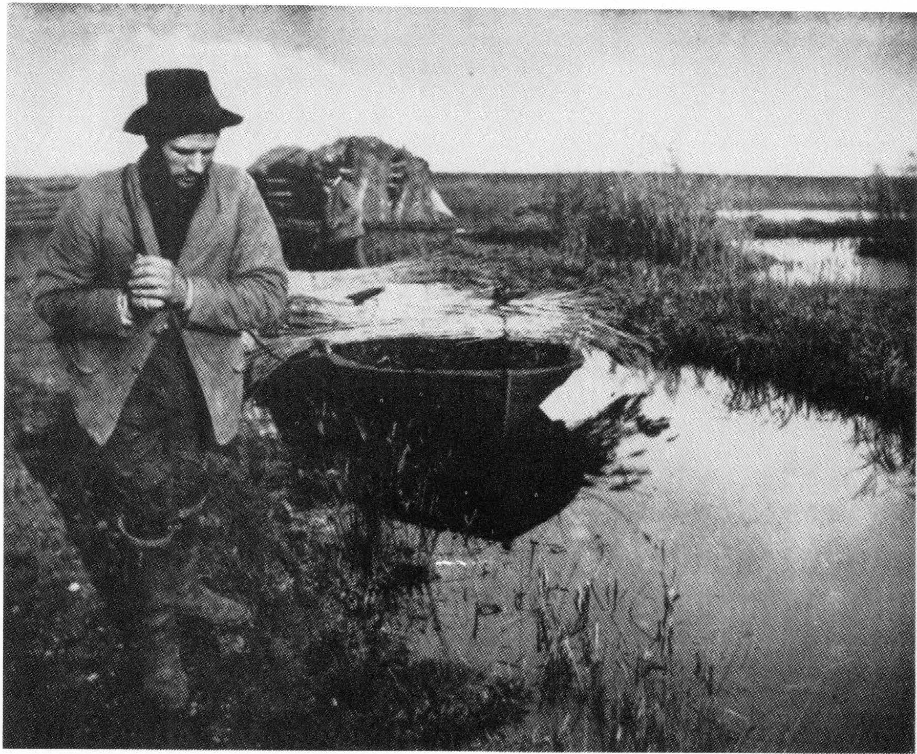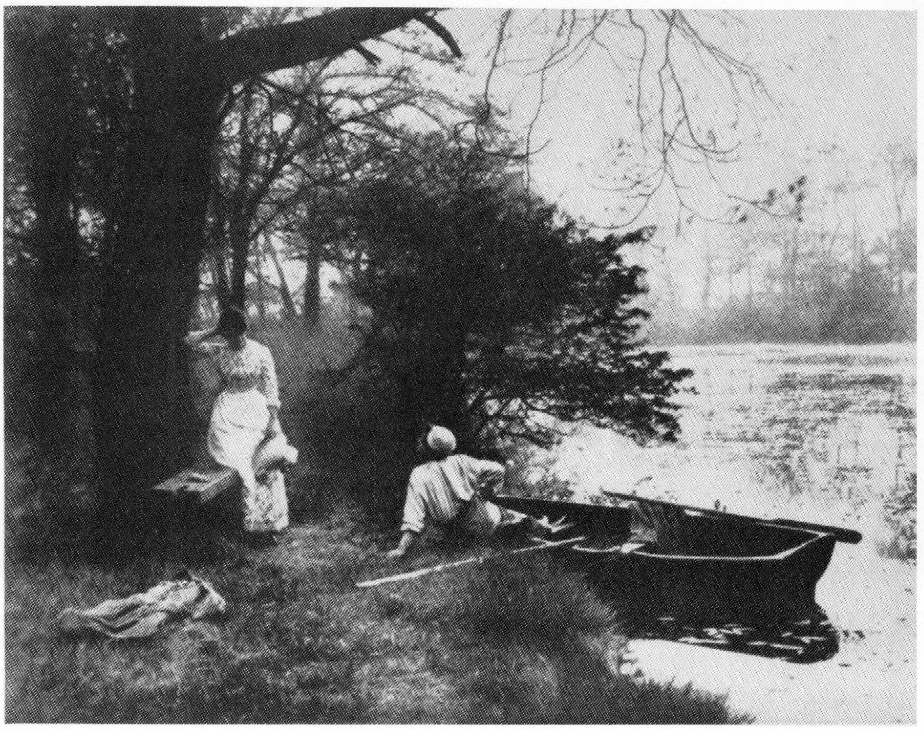This text is a part of the book Creative Photography by Helmut Gersheim.
Desiring to regenerate photography, P.H. Emerson called for a return to nature, as the Barbizon School and Courbet had done a generation earlier in painting. ‘Wherever the artist has been true to nature, and has been good; wherever the artist has neglected nature and followed his imagination there has resulted in bad art. Nature, then, should be the artist’s standard.’ This was Emerson’s anti-romantic Credo laid down in his book Naturalistic Photography (1889). He convincingly demonstrated in seven beautifully illustrated books on the Norfolk Broads (where he had a houseboat) that a photographer could imbue ordinary subjects with artistic quality bearing a personal stamp: consequently there was no need to resort to the artificialities of the fine art photographers.
With a sensitive feeling, Emerson rendered at all sessions of the year the atmospheric conditions of this low-lying land intersected with rivers and lakes. An admirer of J. F. Millet, who devoted his life to portraying the work of the peasants at Barbizon, Emerson depicted with similar insight and sympathy the simple life of the fenland people, setting and taking up their fishing-nets, shooting duck and snipe, gathering reeds, plowing and harvesting. Life and Landscape of the Norfolk Broads (1886), the finest and rarest of Emerson’s books, contains original platinum prints; the succeeding volumes, also published in limited editions during the next nine years, were illustrated with photogravures or photo-etchings-processes which he considered more artistic in giving a broader, softer rendering than a photographic print.
In contrast to the landscape photographers of the eighteen-fifties and sixties, whose aim had been a picture of all-over sharpness, Emerson advocated a certain degree of softness also in the negative through differential focusing (by which the principal subject of the picture was sharp and the remainderless so).
Differential focusing, Emerson claimed, enabled the naturalistic photographer to give a subjective rendering of nature, whereas the realistic photographer recorded with objective, soulless precision. This was, however, only one of Emerson’s many erroneous theories, for subjective photography as opposed to mechanical photography is dependent on the artistic ability of the photographer and not on soft or sharp rendering. The creative photographer will employ whatever method is best suited to the interpretation of the particular subject. Yet in spite of Emerson’s wordy expositions of naturalistic photography, it is difficult to detect much difference in technique between the fine realist landscapes of the first generation of photographers and his own.
Pictures of East Anglian Life (1888), a copy of which Emerson gave to every English photographic society, was intended to elucidate his views set forth in his textbook Naturalistic Photography, which had no illustrations. It was, however, not so much Emerson’s innovations that aroused consternation amongst the older generation at the Photographic Society of London, as the constant stream of invective directed against all who did not agree with him.
Emerson’s contention that a soft photograph gives the breadth of effect and is more suggestive of the true character of nature had in fact first been put forward, as we have seen, by Sir William Newton thirty-six years earlier. Now the controversial question soft versus sharp was revived with renewed vigor, based on the same arguments as before.
To its opponents, the doctrine of soft-focus attacked one of the fundamental principles of photographic optics. To its adherents, the beauty of form and expression was injured by the sharpness of outline. They maintained that photographs were too technically perfect to be artistic and that broad masses of light and shade would indicate a subject sufficiently well, leaving some play for the imagination.
To achieve this, the proposal to construct intentionally defective lenses, first raised in 1853, was argued afresh. Dallmeyer’s portrait lens of 1866 had in fact been designed in the vain belief that the slightly soft effect of Julia Margaret Cameron’s portraits could be artificially imitated. Emerson was a great admirer of Mrs. Cameron, and her work was again cited by the new advocates of soft focus. They did not realize that the softness noticeable in some of Mrs. Cameron’s portraits was not deliberate, but arose from her use of a lens of unusually long focal length (30 in.) which obliged her to work at open aperture to arrive at exposures of manageable length.
This resulted in differential focusing-sharp in the parts on which she focused, and rapidly falling off in the receding and projecting parts of the sitter. But, I repeat, there was no intentional softness for artistic reasons, as in the paintings and lithographs of Eugene Carriere, for instance.
Nevertheless, Mrs. Cameron’s photographs, and the paintings of the Impressionists who had renounced objectivity and realistic representation, lent force to Emerson’s arguments. But it was not until the public had become accustomed to the in- distinct contours of the Impressionists that the idea of soft-focus gained ground-and then it soon got out of control.
Meanwhile, a new school of landscape photography came into being through Emerson’s influence. Its most prominent members were the amateurs George Davison, Col Joseph Gale, A. Horsley Hinton, J. B. B. Wellington, B. Gay Wilkinson, and the professionals Lyddell Sawyer and Frank M. Sutcliffe.


